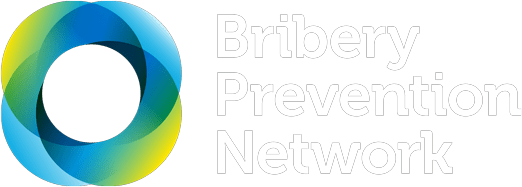This online and interactive tool helps mining companies evaluate and strengthen their anti-corruption controls and procedures, with a specific focus on project licensing, permitting and acquisitions. With indicators selected from close to 40 international best practice standards and frameworks, this tool helps companies reduce their corruption risk exposure.
Complaint mechanism for the OECD Guidelines for Multinational Enterprises
by Australian National Contact Point OECD Guidelines for Multinational Enterprises
The Australian National Contact Point (AusNCP) is responsible for promoting the OECD Guidelines for Multinational Enterprises and to contribute to the resolution of issues relating to their implementation when cases against a company are raised. The complaint mechanism helps parties resolve conflicts. The website provides useful information on how to submit a complaint, track a case and view a closed complaint.
Anti-bribery and corruption policies from the top ASX listed companies
by Bribery Prevention Network
See how your organisation’s anti-bribery and corruption policy compares with the policies of the top ASX listed companies. If your organisation does not yet have an anti-bribery and corruption policy, identify key features that you might incorporate into a future policy. This collection contains links to policies from large organisations across a variety of industries – including the financial, materials, mining, healthcare, real estate, consumer staples, telecommunications, IT, industrials and energy industries.
Self-evaluation tool for corruption risk assessment
by Organisation for Economic Co-operation and Development
Launched in 2021, this interactive tools is designed for a diversity of small and medium sized enterprises. The tool supports businesses to implement corruption risk assessments throughout global supply chains. It offers a good first step for understanding what actions can be taken to improve business corruption risk assessments and provides a list of information sources to do so.
Putting in place an anti-bribery policy is an important part of establishing and maintaining adequate procedures to prevent bribery and corruption. Use this template as a starting point when creating a tailored anti-bribery policy for your business. Adapt this template to your business's specific operating risks, including the activities and geographies that present the highest risk of bribery and corruption issues.
This self-guided online tool provides junior mining companies operating in high-risk jurisdictions with practical strategies to help keep corruption out of new projects, with a particular focus on the licensing and permitting stages. Also available in a printable format, the guide features practical scenarios, sample policies and procedures, and other helpful resources.
This factsheet is designed to support small to medium sized enterprises to meet existing compliance obligations and establish a best practice anti-bribery system. Read about the key considerations and practical steps involved in implementing adequate procedures to prevent bribery.
This publication supports Australian businesses to strengthen anti-bribery risk and compliance management and align anti-bribery procedures with international best practice. Access practical guidance on building and implementing adequate procedures across six key areas: management dedication, risk assessment, due diligence, confidential reporting and investigation, communication and training, and monitoring and review. Learn how to implement adequate procedures across compliance areas.
This resource is designed to assist stakeholders to ask the right questions and hold those responsible for commissioning, selecting and financing public infrastructure to account. The tool provides a practical, easily applicable roadmap to identify and mitigate red-flag corruption hotspots during the process of project selection.
This guide from the Australian Federal Police sets out the importance of self-reporting and the practical steps for companies to self-report possible criminal conduct. It covers when to report, what information to include in the report, and the AFP's investigation process.
The Role of Internal Auditors in Bribery Prevention Webinar
by Allens United Nations Global Compact Westpac
This webinar highlights the important role internal auditors can provide as a critical line of defence against bribery and corruption. Topics include Key factors and environments that facilitate corruption and misconduct risks; Preventing corruption: risk assessments, policies & procedures; Detecting corruption: monitoring systems, controls and reporting mechanisms; and Addressing corruption: investigations and responses
Australia tales a whole-of-government approach to combatting foreign bribery. This page outlines the roles of Australian agencies tasked with responding to foreign bribery and the responsibilities of each agency.
The success of corruption prevention strategies require the commitment and demonstration from senior executives and leaders. This resource outlines the 'tone from the top', deriving from leaders' demeanor and attitude, that is necessary to uphold compliance and anti-corruption.
Recognise red flags for corruption in third party behaviours or activity using this list of common warning signs of corruption. Red flags are organised around the themes of reputational risk, government relationship, insufficient capabilities, type and method of compensation, and unusual circumstances. The webpage is available in three languages: English, Spanish and Portuguese.
Effectively communicate bribery prevention policies and procedures to internal and external stakeholders. Practical recommendations on what communications should cover are included in this resource. Understand where training on bribery prevention policy and procedures should be focussed to mitigate the risks of bribery and maximise awareness of business policy and procedures. This resource forms part of Austrade’s suite of anti-bribery materials.
